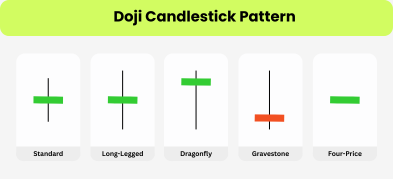
Ultima Markets App
Trade Anytime, Anywhere
Important Information
This website is managed by Ultima Markets’ international entities, and it’s important to emphasise that they are not subject to regulation by the FCA in the UK. Therefore, you must understand that you will not have the FCA’s protection when investing through this website – for example:
- You will not be guaranteed Negative Balance Protection
- You will not be protected by FCA’s leverage restrictions
- You will not have the right to settle disputes via the Financial Ombudsman Service (FOS)
- You will not be protected by Financial Services Compensation Scheme (FSCS)
- Any monies deposited will not be afforded the protection required under the FCA Client Assets Sourcebook. The level of protection for your funds will be determined by the regulations of the relevant local regulator.
Note: Ultima Markets is currently developing a dedicated website for UK clients and expects to onboard UK clients under FCA regulations in 2026.
If you would like to proceed and visit this website, you acknowledge and confirm the following:
- 1.The website is owned by Ultima Markets’ international entities and not by Ultima Markets UK Ltd, which is regulated by the FCA.
- 2.Ultima Markets Limited, or any of the Ultima Markets international entities, are neither based in the UK nor licensed by the FCA.
- 3.You are accessing the website at your own initiative and have not been solicited by Ultima Markets Limited in any way.
- 4.Investing through this website does not grant you the protections provided by the FCA.
- 5.Should you choose to invest through this website or with any of the international Ultima Markets entities, you will be subject to the rules and regulations of the relevant international regulatory authorities, not the FCA.
Ultima Markets wants to make it clear that we are duly licensed and authorised to offer the services and financial derivative products listed on our website. Individuals accessing this website and registering a trading account do so entirely of their own volition and without prior solicitation.
By confirming your decision to proceed with entering the website, you hereby affirm that this decision was solely initiated by you, and no solicitation has been made by any Ultima Markets entity.
I confirm my intention to proceed and enter this website Please direct me to the website operated by Ultima Markets , regulated by the FCA in the United KingdomCommodities Trading
Commodities are traded either in the spot market, where the goods are exchanged for money, or in the financial markets, where they are traded mostly for speculative gains.
In the financial markets, commodities are usually traded using derivative contracts such as futures, options, swaps, and contracts for differences (CFDs). Many stock exchanges also list exchange-traded funds (ETFs) of many commodities.
In many cases, the spot and derivatives markets of commodities are linked. Farmers usually hedge the risks of their produce by taking positions with commodity futures. For example, a cocoa farmer would buy futures of cocoa expiring at a specific price on a certain date to hedge the risks of losses if his produce is spoiled.
However, the speculators would also trade on a range of commodities just to profit from the movement of commodities prices.
Factors Affecting Commodities Prices
Supply and demand are the primary price drivers of any commodity. If either one is disrupted, the prices of commodities swing significantly. Many factors can impact the supply and demand of commodities. Some key factors are:
- Geopolitical factors:
Political instability in resource-rich regions can disrupt production and trade, significantly impacting commodity prices. Conflicts, sanctions, or trade restrictions in key supply areas often result in shortages, causing prices to spike. For instance, any disruption in oil-rich regions can limit global oil supply and lead to price surges. - Currency fluctuations:
Most commodities are traded in US dollars, making currency movements critical. A stronger dollar typically makes commodities more expensive for buyers using other currencies, reducing demand and lowering prices. Conversely, a weaker dollar makes commodities more affordable internationally, often boosting demand and prices. - Economic indicators:
Inflation, interest rates, and GDP growth influence commodities pricing. High inflation can drive up commodity prices as the value of money decreases, while rising interest rates can dampen borrowing and investment, reducing demand. Economic growth generally increases demand for commodities, supporting higher prices. - Market speculation:
Futures markets play a significant role in price determination. Traders and investors anticipate market trends and act accordingly, which can cause price volatility. For example, speculation about reduced harvests can lead to increased buying of agricultural commodities, driving up prices before actual shortages. - Weather conditions:
Weather events directly impact agricultural commodities. Droughts, floods, and hurricanes can devastate crops, reducing supply and raising prices. Conversely, favourable weather can lead to surplus harvests, lowering prices by increasing supply. - Technological advancements:
Innovations in production, extraction, and farming techniques can affect supply and pricing. For instance, improved mining technologies or genetically modified crops can increase yields, reduce costs, and exert downward pressure on prices. - Global events:
Large-scale disruptions such as wars, pandemics, or natural disasters can have widespread effects on commodities. For example, the COVID-19 pandemic significantly impacted oil prices as transportation demand plummeted during lockdowns while agricultural supply chains faced disruptions. - Substitutes and alternatives:
The availability of substitutes influences demand for certain commodities. For example, the increasing adoption of renewable energy sources like solar and wind reduces dependence on fossil fuels, potentially decreasing demand and prices for oil and coal. - Government policies:
Policies such as subsidies, tariffs, and environmental regulations influence production costs and availability. For example, subsidies can lower production costs and reduce prices, while stricter environmental rules can increase costs and limit supply, pushing prices higher. - Stock levels and inventories:
Inventory levels monitored by organisations like the International Energy Agency (IEA) impact short-term pricing. High inventory levels indicate surplus supply, often leading to price declines, while low inventories signal potential shortages, driving prices upward.
Where Are Commodities Traded?
Commodities are traded on different platforms to facilitate the exchange of essential goods and allow speculative trading. We can classify these platforms into physical spot markets, futures exchanges, and over-the-counter (OTC) markets. Each platform caters to different market participants, including producers, manufacturers, speculators, and institutional investors.
To grasp the global commodities market dynamics, one must understand where commodities are traded. Each trading venue ensures efficient price discovery, risk management, and market liquidity.
Spot Markets
Spot commodities markets, also called physical markets, involve directly buying and selling commodities with immediate delivery. These transactions often occur at designated hubs or through private negotiations. For instance, crude oil is traded at delivery points like Cushing, Oklahoma, while agricultural products such as wheat and corn are often traded in local commodity marketplaces.
Futures Exchanges
Futures exchanges are organised marketplaces where standardised contracts for the future delivery of commodities are traded. These exchanges provide transparency, price discovery, and liquidity, making them a preferred choice for hedging and speculation.
Major futures exchanges include:
- Chicago Mercantile Exchange (CME): Popular for trading agricultural commodities, energy products, and metals.
- Intercontinental Exchange (ICE): Specialises in energy markets, including oil, natural gas, and carbon credits.
- London Metal Exchange (LME): Focuses on non-ferrous metals like aluminium, copper, and zinc.
These exchanges standardise contract terms, such as quantity and quality, ensuring trade uniformity.
OTC Markets
OTC markets allow participants to trade directly without an exchange acting as an intermediary. Transactions in the OTC market are typically customised, enabling flexibility in contract terms and delivery.
Electronic Trading Platforms
With technological advancements, electronic trading platforms have become prominent for commodities trading. These platforms provide access to global markets and real-time price information, enabling retail and institutional traders to participate efficiently.
Two popular electronic trading platforms for commodities trading are CME Globex and ICE’s electronic platform.
What Are Commodity CFDs?
Commodity CFDs are derivative contracts that allow traders to speculate on the price of the underlying commodity. These derivatives contracts pay the investor the difference in settlement price between the opening and closing of a trade.
Commodity CFDs allow traders to speculate on the prices of the underlying commodities without buying or selling the physical assets. These CFD instruments also offer leveraged trading, allowing traders to take long and short positions.
Benefits of Trading Commodity CFDs
Speculative traders usually trade commodities CFDs, which have many advantages over trading on the spot market or other commodity derivatives.
Leverage
Similar to other CFDs, commodity CFD traders also gain access to leverage. With leverage, traders only need to raise a fraction of the capital required to take a prominent position in the market.
Leverage is expressed in ratios like 100:1, 50:1, 30:1, and 10:1. In the case of a 100:1 leverage ratio, traders only need to come up with a capital of $100 to take a position of $100,000 (100x of the initial value), while for 10:1, the capital requirement for a $100,000 position is $1,000 (10x of the initial value).
Formula:
\text{Required Capital} = \frac{Total\ Position\ Size}{Leverage\ Ratio}\
\]
1. 100:1 Leverage
- Position Size = $100,000
- Leverage = 100:1
- Required Capital = $100,000 ÷ 100 = $1,000
2. 50:1 Leverage
- Position Size = $100,000
- Leverage = 50:1
- Required Capital = $100,000 ÷ 50 = $2,000
3. 30:1 Leverage
- Position Size = $100,000
- Leverage = 30:1
- Required Capital = $100,000 ÷ 30 x $3,333.33
4. 10:1 Leverage
- Position Size = $100,000
- Leverage = 10:1
- Required capital = $100,000 ÷ 10 = $10,000
On the one hand, leverage amplifies a trade’s profitability, while, on the other, it also heightens the risk of quickly losing all margin capital.
Short and Long Positions
Another advantage of trading commodity CFDs is taking long or short market positions. As a trader, you can open a long position (trade at the buy price of the CFD contract) if you speculate the underlying asset price will increase. However, you can also open a short position (trade at the sell the CFD contract) if you speculate the underlying asset will go down.
No Ownership and No Delivery
Commodity CFD traders do not own any underlying commodities, as these are derivative contracts. Also, traders do not need to take delivery of the physical assets upon closing their positions. This eliminates the logistical nightmare of taking delivery of any physical commodity.
Lower Transaction Costs
Compared to traditional commodity trading, CFDs often have lower transaction costs. Most platforms charge spreads instead of commissions, making them cost-effective for frequent trading.
Global Market Access
Commodity CFD traders can gain access to broad and diversified global markets. The CFD trading platform usually offers trading services with precious metals (gold, silver), energy products (oil, natural gas), and agricultural goods (wheat, coffee).
Around-the-Clock Trading
Traders can trade most commodity CFDs around the clock, five days a week, bringing flexibility to traders across different time zones. Further, the ability to execute trades at any time during weekdays allows traders to react to events in any corner of the world during the day or night.
How Are Commodities CFDs Priced?
Unlike other CFDs of forex, shares, and indices, almost each commodity CFD is priced differently. The differentiation in pricing is because of the disparity between the market prices and exchange units of different commodities.
Each commodity CFD is measured in different units (although most are priced in US dollars, there are some exceptions).
| Commodity | Example price |
| Brent crude oil | $80 per barrel |
| Natural gas | $3.13 per mmBtu |
| Gold | $1900 per troy ounce |
| Cocoa (London) | £9108 per tonne |
| Lumber | $585 per 1000 board feet |
While trading commodity CFDs, traders only speculate on the price movement of commodities. As commodity CFDs do not involve any delivery of the underlying commodity, traders do not need to worry about the trading unit of the physical commodities. Rather, the contract size and value of each commodity CFD becomes crucial.
| Commodity CFD | Value of one contract (per full point) |
| Brent crude oil | $10 |
| Natural gas | $10 |
| Gold | $100 |
| Cocoa (London) | £10 |
| Lumber | $1.10 |
Spreads on Commodity CFDs
Spread is the difference between a CFD instrument’s buying and selling prices. It is also called a bid-ask spread (bid is the selling price of an instrument, while ask is the buying price) and is often the primary revenue source of CFD brokers.
Spreads are variable and often fluctuate based on market conditions like liquidity and volatility.
Brokers often market their services using the terms tight and wide spreads. A tight spread implies a small gap between bid and ask prices, while a widespread means the difference is higher.
Spreads on different commodity CFDs also vary drastically due to the asymmetry in prices of different commodities. Some examples of quoted spreads on different commodity CFDs are:
| Commodity CFD | Spread |
| Brent crude oil | 2.6 |
| Natural gas | 3 |
| Gold | 0.3 |
| Cocoa (London) | 3 |
| Lumber | 60 |
Examples of Commodity CFD Trade
The best way to understand commodity CFD trading is through examples. Let’s understand commodities CFDs trading with two examples:
Example 1: A gold CFD trade
Let’s say you are trading gold CFDs with a broker offering 10:1 leverage on the trade. The key parameters of the trade are:
- Gold spot price: $1,900 per ounce
- Broker’s spread: $2 per ounce (Buy price: $1,901; Sell price: $1,899)
- Trade size: 10 ounces (1 CFD)
As the leverage offered by the broker is 10:1, then the initial margin required to trade 1 gold CFD= 10% of $19,000 = $1,900
Suppose you have opened a long position at a buy price of $1,901.
Scenario 1: Price increases
- New gold price: $1,950 per ounce
- Sell price (including spread): $1,949 per ounce
If you have closed the position at $1,949 (accounting for the $2 spread):
- Profit per ounce: $1,949 – $1,901 = $48
Then, the trade outcome (profit or loss): 10 ounces × $48 = $480 (profit)
Step-by-Step Calculation:
1. Total Position Size:
\[
\text{} 10\ ounces \times 1,900\ (gold\ spot\ price\ per\ ounce) = 19,000
\]
2. Initial Margin Required:
Since the leverage is 10:1, the margin required is 10% of total position size:
\[
\text{} 19,000 \times \frac{10}{100}\ = 1,900
\]
3. Opening Price Consideration:
- Buy price: $1,901 (includes broker’s spread)
- Sell price: $1,899
Final Answer:
- Total Position Size: $19,000
- Initial Margin Required: $1,900
- Entry Price: $1,901 per ounce (long position)
Scenario 2: Price decreases
-
- New gold price: $1,850 per ounce
-
- Sell price (including spread): $1,849 per ounce
If you have closed the position at $1,849 (accounting for the $2 spread):
-
- Loss per Ounce: $1,901 – $1,849 = $52
Then, the trade outcome (profit or loss): 10 ounces × $52= $520 (loss)
Step-by-Step Calculation:
1. Loss Per Ounce:
\[
\text{} Initial\ Buy\ Price\ – New\ Sell\ Price = 1,901 -1,849 = 52
\]
2. Total Loss on the Trade:
\[
\text{} Loss\ Per\ Ounce \times Total\ Ounces = 52 \times 10 = 520
\]
Final Outcome:
- Loss per ounce: $52
- Total Loss: $520
Example 2: A Brent crude oil
Suppose you are trading Brent crude oil CFDs with a broker offering 10:1 leverage. The key parameters of the trade are:
-
- Brent crude spot price: $80 per barrel
-
- Broker’s spread: $0.10 per barrel (Buy price: $80.10; Sell price: $79.90)
-
- Trade size: 100 barrels (1 CFD)
As the leverage offered by the broker is 10:1, then the initial margin required to trade 1 Brent crude oil CFD= 10% of $8,010 = $800
Suppose you are speculating that Brent crude oil will rise and have opened a long position at a buy price of $80.10
Scenario 1: Price increases
-
- New Brent crude price: $85 per barrel
-
- Sell price (including spread): $84.90 per barrel
If you have closed the position at $84.90 (accounting for the $0.10 spread):
-
- Profit per barrel: $84.90 – $80.10 = $4.80
Then, the trade outcome (profit or loss) = 100 barrels × $4.80 = $480 (profit)
Step-by-Step Calculation:
1. Profit Per Barrel:
\[
\text{} New\ Sell\ Price\ – Initial\ Buy\ Price = 84.90\ -\ 80.10 = 4.80
\]
2. Total Profit on the Trade:
\[
\text{} Profit\ Per\ Barrel \times Total\ Barrels = 4.80 \times 100 = 480
\]
Final Outcome:
- Profit per barrel: $4.80
- Total Profit: $480
Scenario 2: Price decreases
-
- New Brent crude price: $75 per barrel
-
- Sell price (including spread): $74.90 per barrel
If you have closed the position at $74.90 (accounting for the $0.10 spread):
-
- Loss per barrel: $80.10 – $74.90 = $5.20
Then, the trade outcome (profit or loss) = 100 barrels × $5.20 = $520 (loss)
The leverage offered by the 10:1 broker amplified the profit and loss in both trades by 10 times the margin capital.
Step-by-Step Calculation:
1. Loss Per Barrel:
\[
\text{} Initial\ Buy\ Price\ – New\ Sell\ Price = 80.10\ – 74.90 = 5.20
\]
2. Total Loss on the Trade:
\[
\text{} Loss\ Per\ Barrel \times Total\ Barrels = 5.20 \times 100 = 520
\]
Final Outcome:
- Loss per barrel: $5.20
- Total Loss: $520
Trade Commodity CFDs with Ultima Markets
Ultima Markets is a fully licensed broker and a multi-asset trading platform offering access to
250+ CFD financial instruments, including Forex, Commodities, Indices and Shares. We
guarantee tight spreads and fast execution. Until now, we have served clients from 172
countries and regions with our trustworthy services and well-built trading systems.
Ultima Markets has achieved remarkable recognition in 2024, winning prestigious awards
such as the Best Affiliates Brokerage, Best Fund Safety in Global Forex Awards, and
the Best APAC CFD broker in Traders Fair 2024 Hong Kong. As the first CFD broker to join
the United Nations Global Compact, Ultima Markets underscores its commitment to
sustainability and the mission to advance ethical financial services and contribute to a
sustainable future.
Ultima Markets is a member of The Financial Commission, an international independent
body responsible for resolving disputes in the Forex and CFD markets.
All clients of Ultima Markets are protected under insurance coverage provided by Willis
Towers Watson (WTW), a global insurance brokerage established in 1828, with claims
eligibility up to US$1,000,000 per account.
Open an account with Ultima Markets to start your commodity CFDs trading journey.












